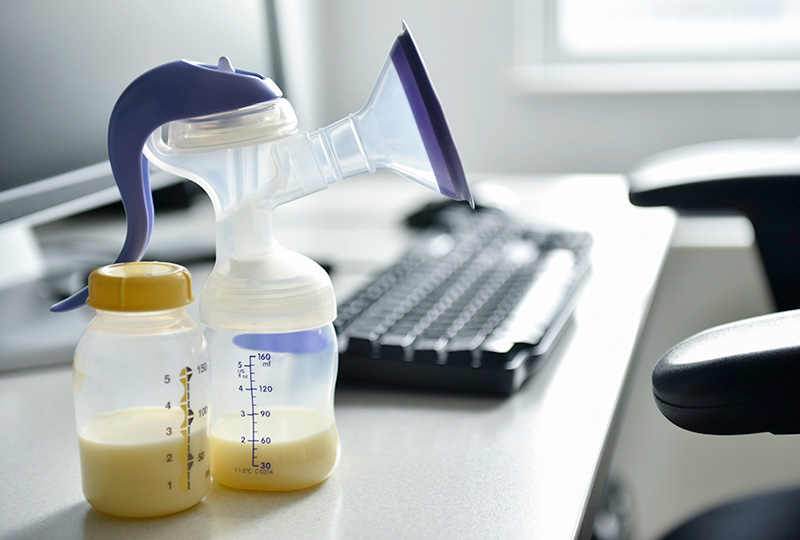Pediatrician and mom offers this advice for breastfeeding while working full-time.
Going back to work after maternity leave is an emotional time. When I went back to work after my son was born, I listened to everyone’s advice and thought I was ready to return. I was organized, planned out my pump breaks and started pumping two weeks before my return. My type A personality made me super confident that I had thought through everything! I was ready and I was not going to cry that first day back.
Little did I realize, it’s hard to be a breastfeeding mom returning to work. Pumping while gazing at my adorable baby in the comfort of my home was not the same as pumping in my “luxury” office cubicle with folding doors and a stack of patient phone calls to return (while pumping). Faced with the plight of diminishing breastmilk, I realized what worked and what I needed to change.
5 breastfeeding tips for working mothers
1. Decide the best time to return.
Going back at the end of the week was the best advice ever. Leaving your baby is hard. By returning to work on Thursday, I only had to work through two days before I had time off again. If you have the opportunity, take a few days before you start back to leave your baby with the caregiver you have chosen. This allows you to practice your day while having some flexibility to check on your baby.
2. Don’t look at the pump.
The watched pot doesn’t boil and the watched bottle doesn’t fill. Just relax. I suggest covering the bottles with a baby blanket and looking at a photo of your baby. Play some music and drink some water.
3. Block it out.
Set times for pumping and stick to them. This is easier said than done during a busy workday. Federal law requires that an employer provides a clean place (not a bathroom) for you to pump. Plan this out with your employer before you return and be firm in its importance. Let go of the guilt about taking a break and realize that this is important for the health of your baby and you.
4. Buy a good double electric pump.
Double pumping is much more efficient than single pumping but the secret of breast pumps is that they are not all created equal. Do your research before you waste money on a pump that doesn’t work well. Some insurance plans now cover pumps, so ask. Remember that hand expression combined with pumping can increase your milk supply.
5. Pay attention to your milk supply.
Several times over the first year, my milk supply dropped slightly. Often I knew why — flu season with lots of patients or after being on call with no sleep or a sick baby who wasn’t nursing well after my workday. Each time I went into full combat mode with increased nursing sessions at home or longer pumping sessions during work hours. The law of supply and demand usually worked well. But there are also breastfeeding vitamin supplements and prescription medicines that may increase your supply so don’t hesitate to call your doctor or lactation consultant if you need more help.
So what do you do if your employer isn’t on board with your plans to pump at work? You can contact your local nonprofits for advice. Here in Nashville, we have Julie’s Village and the Nashville Breastfeeding Coalition.
This post was written by Anna Morad, M.D., Vanderbilt Associate Professor of Pediatrics and Director, Newborn Nursery. Vanderbilt is a Nashvitality “Give Me Five” hospital and follows the Ten Steps to Successful Breastfeeding as described by WHO/UNICEF.
Want to read more about breastfeeding? My Southern Health offers much more information for breastfeeding moms here.


